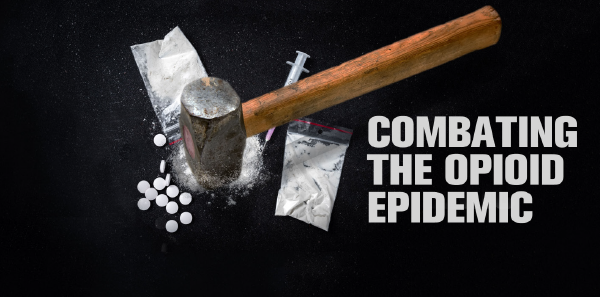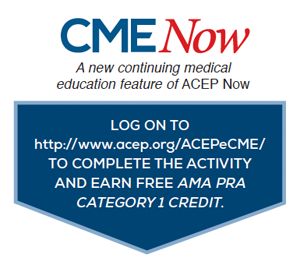

Editor’s Note: This is the first part of an ongoing series on what emergency physicians can do to combat the opioid epidemic. The series will continue in the April issue.
Explore This Issue
ACEP Now: Vol 37 – No 02 – February 2018During emergency medicine residency, all of us were “pimped” regularly on the toxidrome du jour. Each attending had their favorite, and by the end of training, you could predict which answer to blurt out before they even started the question. We had the intoxication syndromes, the withdrawal syndromes, the encephalopathies, the psychoses, etc. However, the word “addiction” was never associated with the explanations given for any toxidromes.
Addiction is a chronic neurobiological disorder that causes a derangement of the reward system, creating characteristic behaviors that stem from the drug replacing all other natural rewards. In fact, the behaviors are so characteristic that they are how the DSM-5 diagnoses the disease. Yet, we tend to perceive these behaviors in our emergency departments as frustrations rather than symptoms of the disease that is the number-one cause of injury-related death in our country.
What drives these behaviors? All addictions have a final common pathway that causes a decrease in the dopamine produced in the nucleus accumbens (NAc) and the ventral tegmental area (VTA). This decrease in dopamine leads to a baseline anhedonia (flat affect with lack of inherent motivation) that is, in the patient’s mind, only reversed with their drug of choice. When a patient says that they are using so that they can feel “normal,” this matches the neurobiological truth.
So how does this happen? We’re glad you asked!
Biology of Addiction
Generally, our reward center produces a stable amount of dopamine on a daily basis that lets us get out of bed, migrate to the coffee maker, and, despite the inner voice begging for the beach, go to work. With a natural stimulus like winning the lottery (or the scheduler forgetting to put you on the holiday schedule), we produce about 100 ng/dL of dopamine in the reward system. On the worst day—you know, the day you pull the backup call ripcord—our NAc produces about 40 ng/dL. This is the “normal” range of dopamine (aka motivation).
When a patient (or one of us) uses an addictive substance, dopamine goes up 10 times higher than the normal range. As with other systems in the body, the brain fights back with aggressive movement toward homeostasis. It decreases the amount of dopamine released. If the patient continues to use, then the body decreases the amount of dopamine produced, which then atrophies the neurons. Finally, with continued use, the brain may kill the dopamine-producing neurons via apoptosis. This neurobiology may make you think back to college and wonder if you could blame alcohol and subsequent low dopamine for lack of motivation to finish charts. So far, we’ve found that compliance officers are not buying it. Hopefully, this is starting to explain why addiction is much more complicated than, “The patient is just making poor decisions,” and you better understand why telling them, “You could have died!” is generally ineffective. Additionally, it explains why attempting basic reasoning with the patient doesn’t work and just frustrates you, and the patient, further.
What do we do with this information? If dopamine is subtherapeutic and we need it to survive, then these patients are in survival mode. People in survival mode do crazy things. Again, this is why trying to have a general conversation about quitting with these patients is likely not going to work, much like trying to have an in-depth conversation with an asthmatic who is tripoding and struggling to breathe. The next time your addicted patient is screaming for “vitamin D,” flailing on the floor, or ripping the hand sanitizer dispenser off the wall, remember that these are symptoms of a severe form of addiction.
This may sound crazy, and some of you are coming up with 50 reasons to call BS on this, but think about it. When a person is serotonin-depleted, they are depressed and may lose their job, stop eating, and, in severe cases, even commit suicide. If a patient’s dopamine is deranged in other parts of the brain, it causes Parkinson’s disease or schizophrenia. A new-onset Parkinson’s patient came in a couple of shifts ago, and she was having delusions to the point where she pulled a gun on her daughter. Is it so hard to believe that a dopamine derangement in the reward center of the brain could cause these behaviors?
What Does this Mean for Emergency Care?
What can we do about it since our current approach doesn’t seem to be working? This one is an easy technical fix but a hard adaptive (hearts and minds) fix. We treat it like any other chronic disorder. We admit it to the hospitalist, and let them figure it out.
Ha, not so fast. The 90-day mortality rate for a post–opioid overdose patient is between 9 percent and 20 percent, depending on geography (mainly due to presence or absence of synthetics). This is higher than a missed non–ST-elevation myocardial infarction. If we miss a troponin of 0.01, the world comes down on us the next morning. However, we discharge the overdose patient without a second thought, despite having treatments that are 55 percent to 75 percent effective at one year well within our scope of practice and sitting in our pharmacies. Now, we aren’t advocating for admitting every one of these patients; we know hospitals would not allow this. However, starting them on bridging medication, such as buprenorphine, so that their withdrawal stabilizes and their craving dissipates is not a bad start. Making a meaningful attempt at care coordination is something else we can do right now. You do not need a special license to use buprenorphine to treat opioid withdrawal, only for maintenance treatment.
We will leave you with this. The next time you see a patient with an addiction who is in survival mode, see the behaviors as a symptom, document them in the chart, and give the patient a diagnosis of addiction and not just the toxicological syndrome of intoxication or withdrawal. Once you see the behaviors as a symptom rather than a frustration, you will be less angry at the patient and more likely to go at them with a bucket of evidence-based medicine rather than security.
Dr. Waller is a fellow at the National Center for Complex Health and Social Needs and managing partner at Complex Care Consulting LLC. Dr. Schwarz is assistant professor of emergency medicine and medical toxicology section chief at Washington University School of Medicine in St. Louis.
Pages: 1 2 3 | Multi-Page





No Responses to “Understanding the Biology of Addiction Might Improve Emergency Care of Patients Who Abuse Opioids”